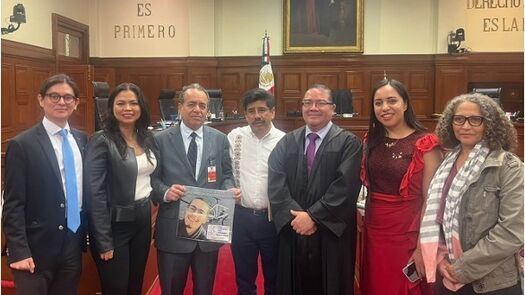December 17, 2025

By Corina Alvarez
Across the globe, messaging apps like WhatsApp and Facebook Messenger have emerged as an effective way to amplify advocacy efforts by reaching more people, in more places, faster than ever before. Beyond increasing access to advocates, these platforms can be leveraged to keep networks engaged in support of critical public health causes.
Worldwide, these platforms see 20 percent more active users than social media networks. More than 1.5 billion people use WhatsApp alone. For public health advocates, this bears the question: should advocacy organizations incorporate messaging apps in their communications strategies — and if so, how?
The Global Health Advocacy Incubator (GHAI) hosted a digital event looking at the ways these messaging apps are used for advocacy in different countries. Here are some of the takeaways.
How messaging apps are used
Messaging apps are being leveraged in a variety of ways. Examples range from coordinating events to staging full media mobilizations. In India, for example, road safety advocates are using WhatsApp to coordinate social media activity, share content for posts and encourage each other to amplify content around days of commemoration.
There are many ways messaging apps can be used:
- Peer-to-peer sharing: Empower users to share your content organically with their networks.
- Community management: Advocates managing communities through group chats can use these forums to answer questions and engage with audiences directly.
- Advocate cultivation: Develop opportunities for audiences to use their status updates to endorse pledges, petitions or broader causes. One drawback of encouraging use of the status updates, however, is that success is hard to track.
- Advocate activation: Drive targeted audiences to lead in online and offline advocacy opportunities by issuing calls to action in the groups.
- Coalition coordination: Advocates can coordinate coalition members and resource sharing, particularly with regards to social media content.
- Influencer management: These platforms can be a conduit to relationship-building and activating networks of influencers, or people who have some influence in advancing your cause.
How to identify if messaging apps are right for your campaign
Speakers shared these four steps for organizations considering whether messaging apps are the right platforms for advocacy:
- Determine feasibility and precedent for messaging app use for advocacy in your country. Is there a messaging platform that is widely used among your audience? Are advocates responsive to messages on these platforms? These are all questions that will help guide the decision to invest time and energy into apps for advocacy.
- Develop strategic rationale for using apps in an advocacy campaign. Prioritize strategies and match tactics to the strategy. Where are current tactics not reaching the desired audience?
- Outline and confirm availability of resources needed. Review the hard costs needed to invest in creating the group, staff time and list building. Will there be a return on investment?
- Develop and commit to a long-term strategy for sustainability and growth. Rather than thinking about it as a one-off, consider it as a channel that can have a long-lasting impact. How does it tie into your long-tern implementation strategies?
While these platforms hold tremendous promise, they also come with unique challenges: engagement can be hard to measure, and unlike other social media platforms, success can be hard to track. Whether investing in these strategies is right comes down to the priorities and bandwidth at the organizational level. With such high adoption and engagement, messaging apps can be a powerful tool for advocacy.


